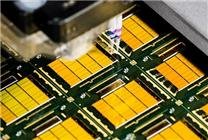Demand Surge for HBM and DRAM Chips: Manufacturers Opt for Caution Amid Pricing Increases
Summary:
- The AI market’s insatiable demand for HBM and traditional DRAM chips is driving up prices significantly.
- Major DRAM manufacturers are refraining from hastily expanding production capacity due to potential market volatility.
- A strategic shift focuses on optimizing existing production lines rather than building new ones, potentially sacrificing PC memory chip output.
In recent months, the demand for High Bandwidth Memory (HBM) and traditional DRAM chips within the AI sector has surged dramatically, resulting in a notable increase in prices. Recognizing the potential profitability of this trend, major DRAM manufacturers are adopting a cautious approach, wary of the risks that could arise from overextending their production capacities.
The hesitance to expand is largely rooted in concerns about a possible downturn in demand, commonly referred to as the "AI bubble." Manufacturers fear that a significant investment—potentially in the tens of billions—could lead to a situation where they have excess capacity with little consumer interest.
In response to this uncertainty, manufacturers are choosing to adopt a conservative yet profitable strategy. Instead of constructing entirely new production lines to meet the rising demand for HBM, they are focusing on the transformation of existing PC DRAM production facilities. This approach allows them to capitalize on the HBM market while maintaining operational flexibility. However, this shift comes with a cost: the reduction of available production capacity for traditional PC memory chips.
Despite the strong demand, major DRAM producers are refraining from excessive capacity increases. Their strategy pivots toward enhancing process technologies, such as higher-level stacking, hybrid bonding, and the development of high-value products, including HBM. This business model prioritizes long-term innovation and sustainability over short-term production ramp-ups.
Industry insights reveal that currently, only two key players—Samsung and SK Hynix—are in a position to marginally expand their production lines. In contrast, Micron is in a holding pattern, as its new ID1 factory in the United States is not expected to begin operations until at least 2027. This delay suggests that there will continue to be significant shortages of PC memory through 2026, impacting product availability in various sectors.
The landscape of DRAM production is becoming increasingly complex, as manufacturers seek to balance immediate market demands with the potential for future volatility. By focusing on technology upgrades and high-value products, they aim to navigate the challenges of the evolving AI-driven marketplace while minimizing risk.
As the situation unfolds, stakeholders in the semiconductor industry will be closely monitoring the developments in both production capacity and market demand. The cautious strategies adopted today may shape the future landscape of DRAM and HBM supply, influencing pricing structures and availability for consumers and businesses alike.
In conclusion, while the demand for memory chips in the AI market shows no sign of abating, the strategies employed by major DRAM manufacturers reflect a careful consideration of potential risks. As they prioritize technological advancements and resource optimization, the market must remain vigilant, adapting to both emerging opportunities and looming uncertainties.






